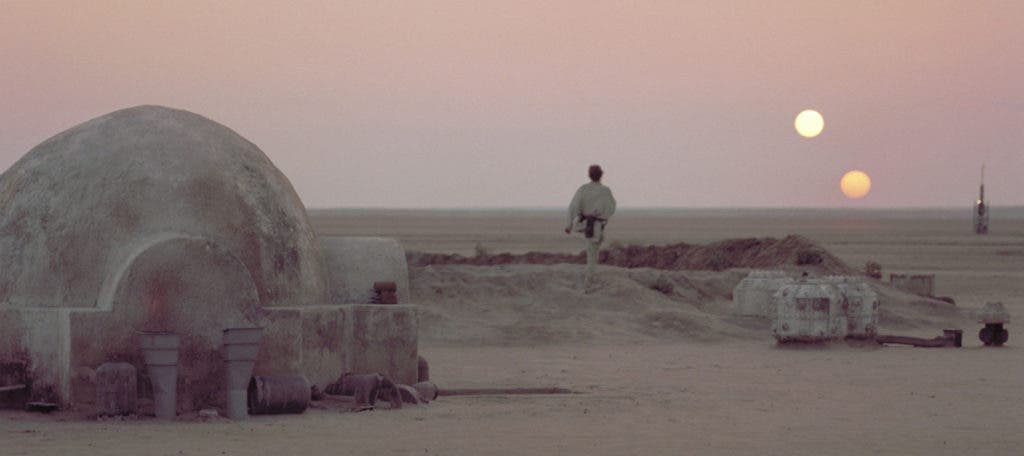A double sunset such as the fictitious one on Tatooine from Star Wars has always been on many people’s minds. About 1.3 million years from now, if anyone is still around, he could actually experience a similar scenery here on Earth.

Uninvited stellar guests
Nothing is static in the Universe. Though our senses tell us we’re standing still, since the days of Copernicus we’ve known that the planet we call home revolves around the Sun, which in turn moves around the center of Milky Way, which yet again revolves around the center of mass lying in between Andromeda and Milky Way. In other words, everything is in perpetual motion relative to a reference point. This means that sometimes cosmic objects and systems can behave in very surprising ways.
A massive survey of 300,000 stars and their motion relative to the Sun was performed by astronomers working with the ESA’s Gaia satellite. The scientists plotted the stars’ closest approach to the Sun determined for up to five million years in the past and future. They found 97 stars which should pass within 150 trillion kilometers, with 16 coming within about 60 trillion km.
A particular encounter stands out, that with Gliese 710, which will pass within just 2.3 trillion km or about 16 000 Earth–Sun distances, some about 1.3 million years from now. For a sense of measure, the outermost planet of the solar system, Neptune, orbits around the sun at 30 Sun–Earth distances.
That puts Gliese 710 well within the Oort Cloud, a humongous shell of icy objects that exist in the outermost reaches of the solar system, extending out to 15 trillion kilometers from the Sun or 100 000 times the Sun–Earth distance.
Understanding alien stars that approach our solar system is important work that might one day even avert a planetary catastrophe. It’s thought that most comets in our solar system come from the Oort Clouds. These are mainly perturbed by the gravitational influence of stars which jolts them into orbits that bring the comets closer to the inner solar system. Some of these comets could enter a collision course with Earth or other planets.
Coming this close to the sun, Gliese 710 will certainly stir the Oort Cloud bee-hive, though in what way remains unclear at this point.
We do know that this alien star has a mass of 60% that of our Sun and that it travels much slower than most stars: nearly 50 000 km/h at closest approach, compared with the average 100 000 km/h. This relatively slow motion will likely amplify the Oort Cloud perturbation effect than otherwise in the case of faster stars.
What’s also certain is that Gliese 710 will shine brightly in the night’s sky as seen from Earth’s surface. Astronomers estimate its brightness will be three times that of Mars.
Meeting a rogue
The following animation put together by ESA focuses on Gliese 710 wandering through the galaxy, ultimately performing a close encounter with our Sun in 1.3 million years by passing within the Oort Cloud reservoir of comets in the outskirts of our Solar System. The ESA’s press release explains further that:
“The motion can be likened to what an observer standing beside a road would see looking at an approaching car, and then swinging around to continue to follow it as it moves away. As a result, the objects in the background – in this case distant stars – become blurred as you move quickly to maintain a visual on the passing object.”
Of course, Gliese 710 wouldn’t be the first star to cause a racket in our solar system’s backyard. About 70,000 years ago, during a time when our ancestors were busy staying alive in the aftermath of the Toba super-eruption, a low-mass star system nicknamed “Scholz’s star” passed roughly 52,000 astronomical units away from the sun.
Scientific reference: “The completeness-corrected rate of stellar encounters with the Sun from the first Gaia data release,” by C.A.L. Bailer-Jones, is published in Astronomy & Astrophysics.



